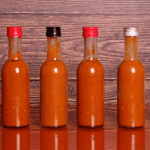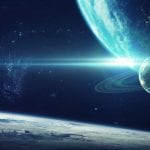 Music
Music  Music
Music  History
History 10 Less Than Jolly Events That Occurred on December 25
 Weird Stuff
Weird Stuff 10 Funny Ways That Researchers Overthink Christmas
 Politics
Politics 10 Political Scandals That Sent Crowds Into the Streets
 Weird Stuff
Weird Stuff Ten Bizarre Facts About The Doge Meme
 Our World
Our World 10 Ways Your Christmas Tree Is More Lit Than You Think
 Movies and TV
Movies and TV The 10 Coolest Stars to Set Sail on The Love Boat
 History
History 10 Things You Didn’t Know About the American National Anthem
 Technology
Technology Top 10 Everyday Tech Buzzwords That Hide a Darker Past
 Humans
Humans 10 Everyday Human Behaviors That Are Actually Survival Instincts
 Music
Music 10 Surprising Origin Stories of Your Favorite Holiday Songs
 History
History 10 Less Than Jolly Events That Occurred on December 25
 Weird Stuff
Weird Stuff 10 Funny Ways That Researchers Overthink Christmas
Who's Behind Listverse?

Jamie Frater
Head Editor
Jamie founded Listverse due to an insatiable desire to share fascinating, obscure, and bizarre facts. He has been a guest speaker on numerous national radio and television stations and is a five time published author.
More About Us Politics
Politics 10 Political Scandals That Sent Crowds Into the Streets
 Weird Stuff
Weird Stuff Ten Bizarre Facts About The Doge Meme
 Our World
Our World 10 Ways Your Christmas Tree Is More Lit Than You Think
 Movies and TV
Movies and TV The 10 Coolest Stars to Set Sail on The Love Boat
 History
History 10 Things You Didn’t Know About the American National Anthem
 Technology
Technology Top 10 Everyday Tech Buzzwords That Hide a Darker Past
 Humans
Humans 10 Everyday Human Behaviors That Are Actually Survival Instincts
Top 10 Cool Facts about 7-Eleven
With summer just around the corner, everyone should be preparing for ice-cold Big Gulps and refreshing Slurpees—and don’t forget to grab your free one on July 11th!
7-Eleven has become an icon of America, the neon sign comforting glow to remind you that no matter what time it is, you can grab some potato chips and donuts. Here are some awesome facts about the convenience store you probably never knew.
Related: 10 Businesses Too Big to Fail That Totally Flopped
10 The Big Gulp Revolutionized Soda Dispensing
Nowadays, every movie theater and most restaurants in the country allow customers to fill up their own drinks at soda fountains, but it wasn’t always that way.
In 1976, 7-Eleven was looking for a way to make itself stand out from other American convenience stores. What better way to do that than with an obscene amount of sugar?
Coca-Cola suggested a new 32-ounce soda cup—a huge increase from the largest size of just 20 ounces from before. Before the introduction of the Big Gulp, all 7-Eleven fountain drinks were only available behind the counter, meaning an employee had to fill it up. The massive size of the cups meant employees were spending too much time waiting for the soda and not enough time at the register.
Taking a look at how customers enjoyed pouring their own coffee, the company opted to create self-service dispensing stations, both allowing customers to make their drinks exactly as they wanted them and saving time for busy workers. According to the Smithsonian, 7-Eleven was the first retailer in America to install self-serve beverage stations.[1]
9 The Big Gulp Also Caused Some Trouble
America loved the cheap price and huge portions of the Big Gulp, and throughout the ’80s, both the Slurpee and Big Gulp became synonymous with freedom and fun.
But not everyone loved this newfound cup of carbonated flavor. 7-Eleven didn’t just stop with the standard size but continued to size up with the 44-ounce Super Big Gulp and, eventually, the 64-ounce Double Gulp. Politicians and health experts attacked the additions, pointing out that the amount of sugar in 64 ounces of soda is bad for you (to say the least.)
Bans on sugary drinks and limits on drink sizes have been brought up regarding 7-Eleven and other soda retailers, but none have taken hold. Say what you will about the United States, but we fight for our sugar.[2]
8 It Started as an Ice Store
Before 7-Eleven signs lit up American towns, there was the Southland Ice Company. As the name suggests, this small station in rural Texas sold ice. In 1927, one Southland started selling milk, eggs, and other basic groceries out of the small ice station.
Southland founding director Joe Thompson figured (correctly) that customers would be more inclined to visit their nearby store rather than travel longer distances to larger grocery stores. He eventually bought the entire Southland Ice Company and renamed it the Southland Corporation, which went on to franchise the tiny convenience stores that would go on to be the original 7-Elevens.[3]
7 The Original Stores Included Totem Poles
In 1928, one Southland Ice Station manager purchased a totem pole from Alaska, almost 30 years before the area was a U.S. state. Originally just bought as an indigenous souvenir, the manager placed it in front of the store and found that customers were intrigued.
Store executives took notice of the uptick in business at this particular location and added totem poles to more stores across the country. With this came a new theme: Each location now boasted Alaska-native decor and a new name.
No longer the Southland Ice Company, these new stores were called “Tote’m stores,” a pun on the new theme and the fact that happy customers “toted” away their items.[4]
6 The Name Comes from the Hours
Anyone who’s ever gotten the munchies at two in the morning knows that 7-Eleven isn’t only open from 7 a.m. to 11 p.m. At least, not anymore.
After the Great Depression and World War II, the Texas company (like most American stores) was struggling. In order to drum up more business, Tote’ms extended their hours to, you guessed it, 7 a.m. to 11 p.m. While this might not seem extraordinary today, late-night options were scarce in this post-war world.
To promote these odd hours, the names of the stores were changed, and the rest is history. By the time the company began implementing 24/7 stores in 1963, the name had become synonymous with the convenience of the locations, and the name stuck.[5]
5 They Became 24/7 Thanks to a Football Game
While the 7 a.m. to 11 p.m. hours were extraordinary for the times, today, we couldn’t survive without the option to get a Slurpee any time of day. For this privilege, we can thank the University of Texas football fans.
In the early ’60s, 7-Eleven experimented with 24/7 locations throughout the Las Vegas strip, correctly assuming that the amount of alcohol and drugs circulating the city would lead to high demand for food all day long.
Until 1963, Sin City was the only U.S. city to enjoy 24/7 stores. In Dallas of that year, a crowd of students forced a 7-Eleven location near campus to stay open due to the late ending of a football game. All night long, the store was packed with students clamoring for a snack. The next time there was a game, the store stayed open all night, with great success once again.
Eventually, they changed the schedule to stay open all day every day, and other college town locations followed suit. The massive success of this campaign opened executives’ eyes, and slowly but surely, 24/7 stores became the norm.[6]
4 There’s a Lowercase “N” in the Logo
Have you ever noticed something odd about the 7-Eleven brand logo? Namely, that all the letters in the title are capitalized except for one.
The “n” in the logo is lowercase, the sole letter to be so. The primary theory for why this is the case comes from the first wife of John Thompson, 7-Eleven’s president in the ’60s. She thought that the capital-lettered version of the logo looked too aggressive and suggested one letter be lowered to “make it look more graceful.”
While this has never been proved, this reasoning has been backed up by Margaret Chabris, the public relations director of the company, and it even appears on the official 7-Eleven website FAQ.[7]
3 It’s Owned by a Japanese Corporation
Although 7-Eleven is an American-made company, the convenience store chain is now owned by Japanese corporation Seven & I Holdings.
Southland Ice Company filed for bankruptcy in 1991. At that point, Japanese supermarket chain Ito-Yokado purchased more than 70% of the corporation’s stocks. In 2005, 7-Eleven Japan bought the entire corporation.
While we may think of 7-Eleven as a staple of American culture, there actually are more 7-Eleven stores in Japan than in any other country in the world, including the U.S. This is even though Japan is less than 13 times the size of America!
In fact, 30% of all 7-Elevens in the world are located in Japan. Stores there are slightly different from those we’re used to in America due to cultural differences in convenience stores. 7-Elevens in Japan are famous for their bento box meals, sushi, and onigiri (rice balls.)
I think you’d be hard-pressed to find anyone willing to try Texas convenience store sushi.[8]
2 Slurpees Are Just Icees
Ever wondered what the difference between an Icee and a Slurpee is? The answer is… there is none. They’re the same product.
The reason you can buy Icees anywhere but only get Slurpees at 7-Eleven is that in 1965, the two companies made a licensing deal that 7-Eleven stores could sell Icees in stores under a different name. The name “Slurpee” comes from the sound they make when slurping through the straw.
Today, there are over 300 Slurpee flavors, and the Slurpee has become one of the most iconic symbols of the convenience store. Throughout the summer, 7-Elevens across America offer deals such as Free Slurpee Day (which occurs, of course, on 7/11) and even Bring Your Own Cup Day, where patrons can fill up any container (up to 10 inches in diameter) for just two dollars.[9]
1 It’s Considered the First-Ever Convenience Store
Nowadays, in almost any major city in the world, no matter where you are, you’ll find yourself just a few blocks away from snacks and basic groceries. Convenience stores, as the name suggests, are there to offer an easier and closer shopping experience than regular mega-stores like Walmart and Target can give. Smaller selections and buildings allow these stores to pop up wherever and whenever needed.
This all started with 7-Eleven. Jeff Lendard, the vice president of the National Association of Convenience Stores, credits the extended hours of the original 7-Elevens as the beginning of the convenience store movement.
Whether you call them convenience stores, corner stores, or bodegas, we can all thank the Southland Ice Company for opening our midnight snacking options.[10]








